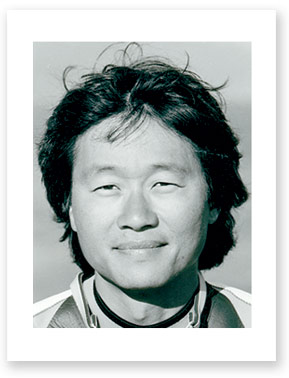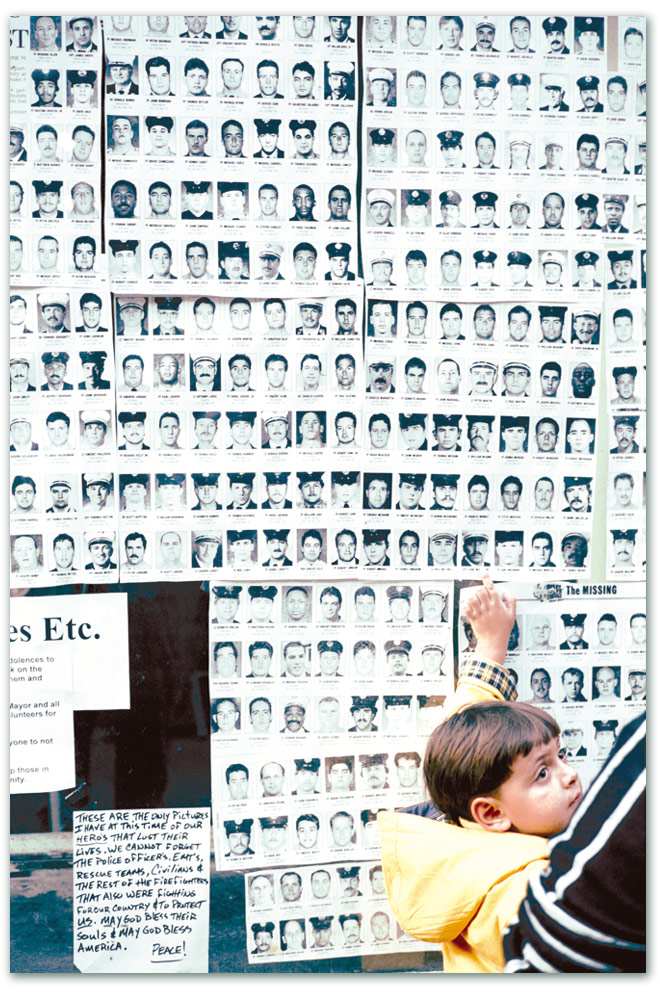 SIX MONTHS HAS PASSED since the publication of the last issue of American Windsurfer. While the events of September 11 have disrupted our flow, I believe it will prove to be a turning point for the magazine and for the sport of windsurfing. Much has been said and written about the events of 9/11, I am compelled to add one more footnote with these words and pictures. They are the perspective of a windsurfer who by chance witnessed the events of 9/11 in person.
SIX MONTHS HAS PASSED since the publication of the last issue of American Windsurfer. While the events of September 11 have disrupted our flow, I believe it will prove to be a turning point for the magazine and for the sport of windsurfing. Much has been said and written about the events of 9/11, I am compelled to add one more footnote with these words and pictures. They are the perspective of a windsurfer who by chance witnessed the events of 9/11 in person.
On the morning of September 11th, I was in New York City not far from the doomed World Trade Center. I was there visiting an aging friend in a hospital and to have lunch with a potential sponsor who was interested in the formation of a windsurfing tour. That same afternoon, I was to fly out of LaGuardia and go on press for the printing of this magazine that you are now holding. Issue 9.1.

Pilgrim, how you journey
on the road you choose
to find out why the winds die
and where the stories go.
All days come from one day
that must you must know,
you cannot change what’s over
but only where you go…Enya from her A Day Without Rain album
I’m sure a numerologist can have fun over the coincidence that issue 9.1 was supposed to go on press on 9/11. For obvious reasons, it never made it to the printers. In fact, it wasn’t long afterward that the printing plant in Akron, Ohio was forced to shut down and lay off thousands of workers. The domino effect was real and some sectors of the economy were hit harder than others. With the printing industry already on shaky grounds, 9/11 became the last straw for many publications and with them, several printing plants followed.
I have never hidden the fact that the windsurfing industry has also been on shaky grounds for the last few years. The lack of attention given to entry level windsurfers, the fanatical focus on performance and the meteoric rise of kitesurfing have had the effect of scraping off the top and bottom layers of the sport. If it were not for the determination of a few believers of the sport, windsurfing, as an industry, would have sunk long ago. American Windsurfer magazine was no different and on 9/11, it suddenly found itself, literally and figuratively, on Ground Zero.
Like most of the world, I first watched the event unfold on TV while standing in a hospital some 20 blocks away. By the time we saw the second plane crash into the South Tower, I realized this was no accident.
I walked into the smoke-filled streets stunned like everyone else. As the city shut its bridges and tunnels down, I walked the streets for the next 48 hours absorbing the forces of the event. I walked passed fire stations filled with flowers and pictures memorializing their fallen. One station had lost their entire battalion. Tears came easily and they still come at odd times. The blank faces of strangers standing at the corner holding pictures of their missing beloved still haunts me.
Haunting memories swirled everywhere as lives shifted from this world to the next with immense force. Thousands of lives were whisked away . . . instantly returning to pure energy.
I could not help but to be tuned to the energy; it was a repeating melody—a requiem for those departing souls.
No, the music did not die as one might expect after a day like 9/11. In fact, it transformed New York City into a caring and nurturing place where one couldn’t help but feel the beat. New Yorkers were saying “Thank You” to each other and, for the first time, crime took a vacation.
Suddenly, each person had a story. Each radiated goodness. People stood patiently in lines that snaked around blocks to donate blood. People became bigger then themselves and experienced heroism and love like they never had before. Freedom was at stake and it was worth fighting for.
I remember standing on the 37th floor looking across five blocks to the Empire State building where police had evacuated the landmark tower because of a bomb threat. I reflected on the famous saying, “. . . the only thing we have to fear is fear itself” and wondered how the country would fare. I wondered what would happen to the sport and how the magazine would survive. I can’t say I was very optimistic.
I had to make a choice and it came down to a few options. I could join a list of magazines that had shut down since 9/11 or I could try to hang-in and continue to fight for survival in an industry that was going nowhere. I could introduce other sports into the magazine, thereby expanding readership and advertising sources but diluting windsurfing.
None of the options seemed real: none of them felt like long-term solutions that would help windsurfing. Something had to happen, the phoenix must rise (just like our logo) and American Windsurfer magazine had to take the lead by dramatically making a change for the future. We had to take the risk. We had to make a tough choice.
So we delayed the publication of this issue and began to make changes. Our focus was to create a foundation so that the magazine can help grow the sport by targeting entry level and make the sport a viable business opportunity for both the magazine and the shop owners. With healthy shops and a solid base of entry level and recreational windsurfers, the sport will be rigged to soar.
This is not to say that nobody in the industry is doing anything in this area. Quite the contrary, companies such as Hi-Fly as well as Starboards with their entry level boards and Mistral with their one-design Prodigy are solid products. But they are token efforts in the big picture of the sport. The entry level marketing budgets from these companies are limited compared to what they spend in order to keep their hands in the performance market. This fight to maintain market share clearly has an effect on the direction of the sport and how publications cover the sport.
Advertisement
In the windsurfing world, magazines, for the most part, play the role of a follower. They are there to compliment the big companies that support the magazine with advertising revenue. As long as the magazine is under this sphere of influence, it is pulled along by the industry. In the case of American Windsurfer, we have always been on the fringe of this envelope and for the most part, have been able to be sustained by the readers and a good mix of out of the industry advertisers and a group of ancillary companies. This is why we have been able to publish many controversial articles and have been able to define our independence and freedom without suffering a major financial consequence.
But the price of freedom is always high and to keep it, even higher. Choices are always difficult to make. They can be clouded by our restrictive fears or overwhelmed by our blind and ambitious faith. But making choices is the art of life and there is no way around it.
When I make a choice, I like to believe that there can be no failure when it is made with love and conviction. When I make a choice I am also counting on the fact that the synchronicities, the mysteries, the winds of life are also players in this game of choice. For they are the variables, the unknown elements, the spices that answer prayers and provide affirmations to hard choices.
9.1 on 9/11 is a beginning and it got started at Ground Zero. It was a choice made with passion and conviction for the sport. But it needs the wind and it needs kindred spirits of subscribers like you. Without these two elements, there is no magic for windsurfing. Without windsurfing, there is no magic for freedom.
John Chao
Publisher/Editor

